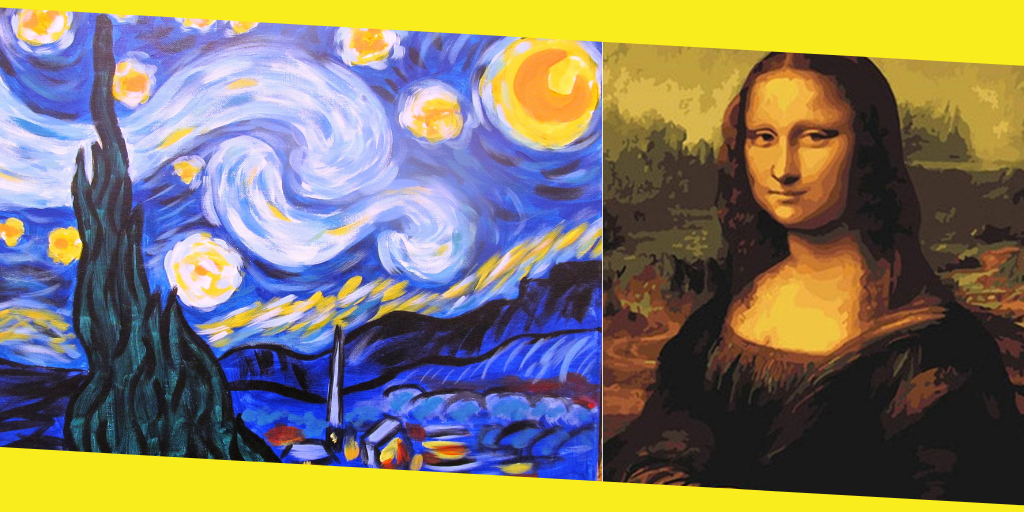The Most Recognizable Artworks That Became The Important Part of Pop Culture

Why do some works of art, photographs, and buildings become part of the global consciousness—often remaining instantly recognizable for centuries after they were developed—while others just as beautiful languish in anonymity forever? As it turns out, the answer is pretty complicated.
Certainly, talent plays a part. The world continues to appreciate a particular Michelangelo, Mapplethorpe, or Frank Lloyd Wright because the makers had complete mastery over their form. The resulting creations are beautiful and awe-inspiring.
But even among these well-known, eminently talented artists, particular masterpieces are instantly memorable around the world. And other equally wonderful creations? Are unknown to everyone but scholars. So clearly, it’s not quality alone that makes certain images stick in our minds forever.
Though many theories abound, the cultural and political climate at the time the iconic piece was created and subsequent support from the particular genre’s influencers seems integral to works rising to prominence in the first place. But in the end, the secret sauce of being remembered for generations to come is probably out of human control. It most likely comes down to luck—a little bit of magic that somehow makes the old seem endlessly new from generation to generation.
Contents
ToggleMona Lisa
Arguably the most memorable work of art in the world is the Mona Lisa. Leonardo da Vinci’s surprisingly small portrait of a woman with a mysterious smile still draws throngs of visitors a full five centuries after it was created. Housed at The Louvre in Paris, perhaps one of the reasons for its longevity is its accessibility to world travelers.
Over the years the Mona Lisa has been reimagined by artists, for example in the pop art renderings by Andy Warhol. Her image has also been used in advertising for the likes of Vidal Sassoon, GEICO and Arby’s to name just a few. And who can forget the popular song of the same name by Nat King Cole? From the looks of things, that soulful gaze will continue to remain first and foremost in our minds forever.
Starry Night
Another unforgettable work of art is Starry Night. Vincent Van Gogh created the colorful, swirling blue and yellow dominant image of the view from his room at the asylum in 1889. Even though his career lasted only a decade, his painting has only grown in popularity for more than a century.
Rapper Tupak Shakur wrote a poem in ode to it; the opening line to singer Don McLean’s hit song Vincent are, “starry, starry night.” In 2017, the first fully hand-painted film Loving Vincent included the famous image and earned an Oscar nomination. Starry Night is also incredibly popular as a t-shirt design, adorning everything from pockets to the entire clothing’s fabric.
The Scream
And then there’s the iconic picture by Edvard Munsch entitled The Scream. It depicts an anguished person holding their face, mouth wide open in an agonized howl, a blood red sky hanging ominously overhead. Though Munsch was understandably in a bad place when he created it—at the time, he chain smoked, was penniless and addicted to alcohol, and mourning an ill-fated love affair—The Scream has been used more playfully in modern pop culture.
Everyone remembers the movie poster for Home Alone, where a young Macauley Culkin holds his face a la Musch’s work after he learns his family boarded a flight for Paris without him. Andy Warhol reproduced and manipulated the image many times over, using a variety of color psychedelic schemes. Glade used it in a commercial as a reaction to foul odors. And perhaps the most memorable depiction of all is in the horror movie Scream, where the killer’s mask is an eerie nod to Munsch’s image.
David
Michelangelo created this seventeen-foot marble statue of biblical figure David in the early 1500s. Commissioned for display by a cathedral in Florence, the statue ended up in a city square for public rather than religious consumption. David has been playfully called the world’s most famous nude man.
Today, people continue to adorn their homes with replicas of the statue. A magnet set that lets you clothe the famous statue in different whimsical outfits exists. There’s even a men’s bathing suit that makes it look as if the wearer is naked, displaying David’s sculpted parts instead of his own. Recently, the Italian Culture Minister took umbrage when an image showing David brandishing a gun was used in advertising. No one disrespects David and gets away with it!
The Thinker
Conceived by Auguste Rodin in 1881, this bronze sculpture depicts a naked man sitting on a rock, bent at the waist with chin in hand as if deep in thought. It was commissioned to be part of a larger collection based on Dante’s epic The Divine Comedy. Some even think the sculpture depicts Dante himself, pondering the gates of hell. Today, there are over 20 versions of The Thinker all over the word.
In modern times, The Thinker lives on. When “Tebowing”—people mimicking football player Tim Tebow’s kneeled pose—was a popular pastime, it was often compared to Rodin’s statue. In the early 1990s, legendary comedian Robin Williams was photographed offering the statue a roll of toilet paper. Most recently, The Thinker was memorialized in a Google Doodle on what would have been Rodin’s 172nd birthday.
Einstein’s Birthday (aka Einstein’s Tongue)
As legend has it, Albert Einstein’s friends and family gathered to celebrate his 72nd birthday in rousing fashion. Photographer Arthur Sasse was on hand to take pictures, and at the end of the night he tried to coax the famous physicist into smiling one last time. Instead, Einstein stuck out his tongue at Sasse. The iconic image everyone recognizes today was the result.
The young photog asked for permission to use the image for personal greeting cards, and Einstein was a good sport about it, even going so far as to sign the print. That picture sold for six figures in 2017. The image is used on a wide variety of products today, from t-shirts designs to mugs to socks and everything in between. Einstein has been the subject of songs and albums by the likes of Mariah Carey and Kelly Clarkson, depicted in children’s show Little Einsteins, and used as inspiration for a plethora of characters in television and film, including Doc Brown in the Back to the Future series.
V-J Day in Times Square (aka The Kiss)
It was August 14, 1945 and celebration of the end of World War II had taken over Times Square. Photographer Alfred Eisenstaedt captured a young sailor kissing a woman in a white dress. The iconic picture, now known the world round, was published in Life magazine.
Though the shot was taken more than 70 years ago, it remains in popular culture today. A life-size sculpture of the pose was unveiled in Times Square to commemorate it’s 60th anniversary. In the film Night at the Museum: Battle of the Smithsonian. Two characters jump into photograph, one of which kisses the lady in white instead of the sailor. And during a recent fleet week, singer Katy Perry brought a serviceman onstage to recreate the famous scene.
Art that Lives On
Whether your wear your favorite image on clothing or a tote bag, display replicas in your home, or just recognize it in the media, there’s no question that certain works of art will live on for generations to come. It will be interesting to see what newer works come into global consciousness and stay there as time marches on. Will you or someone you know create them? Only time will tell.
Recommended For You
AMUSING Natural Fertilizer Recipes You Will Like to Learn About
Most Inside
Most Inside offers high-quality recommendations and valuable updates to enhance all aspects of your life, providing premium guidance and enriching experiences.




